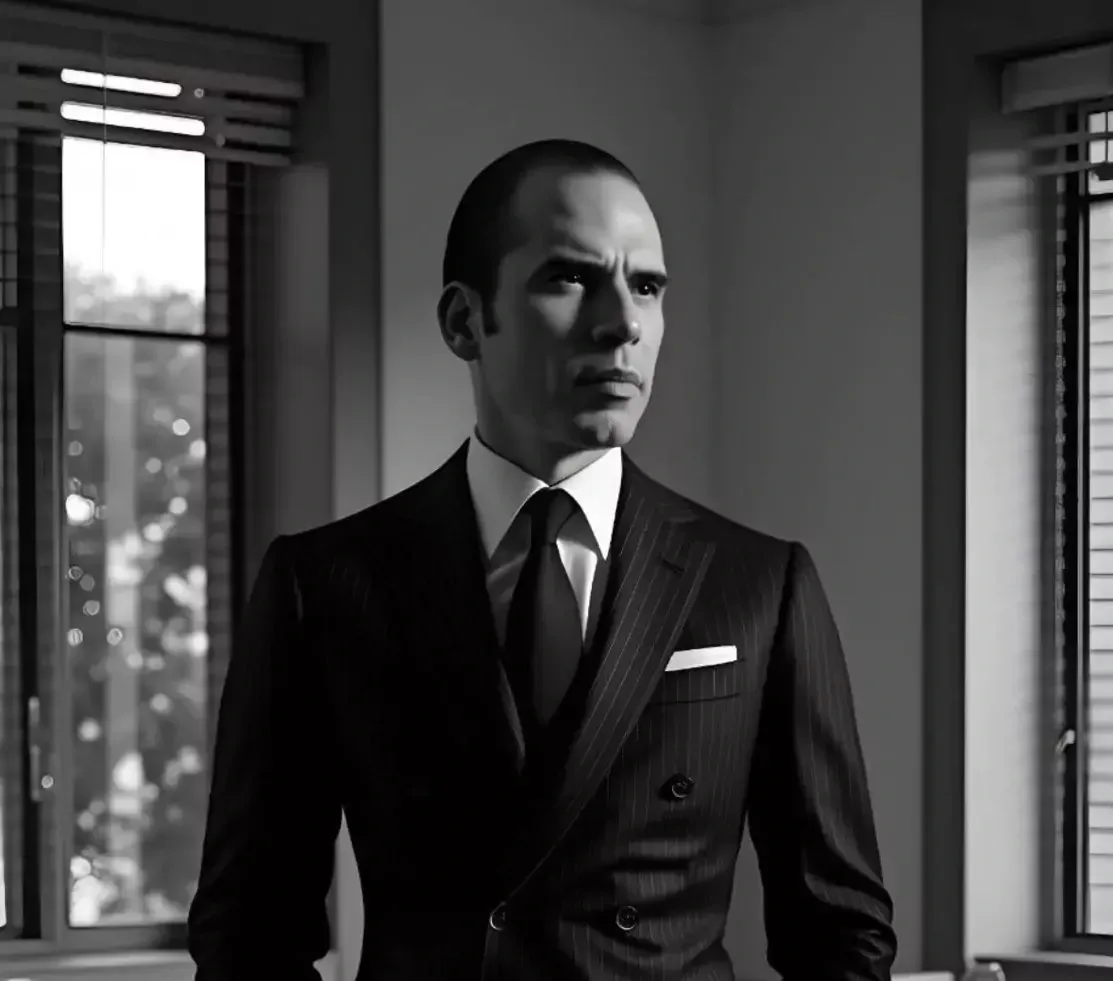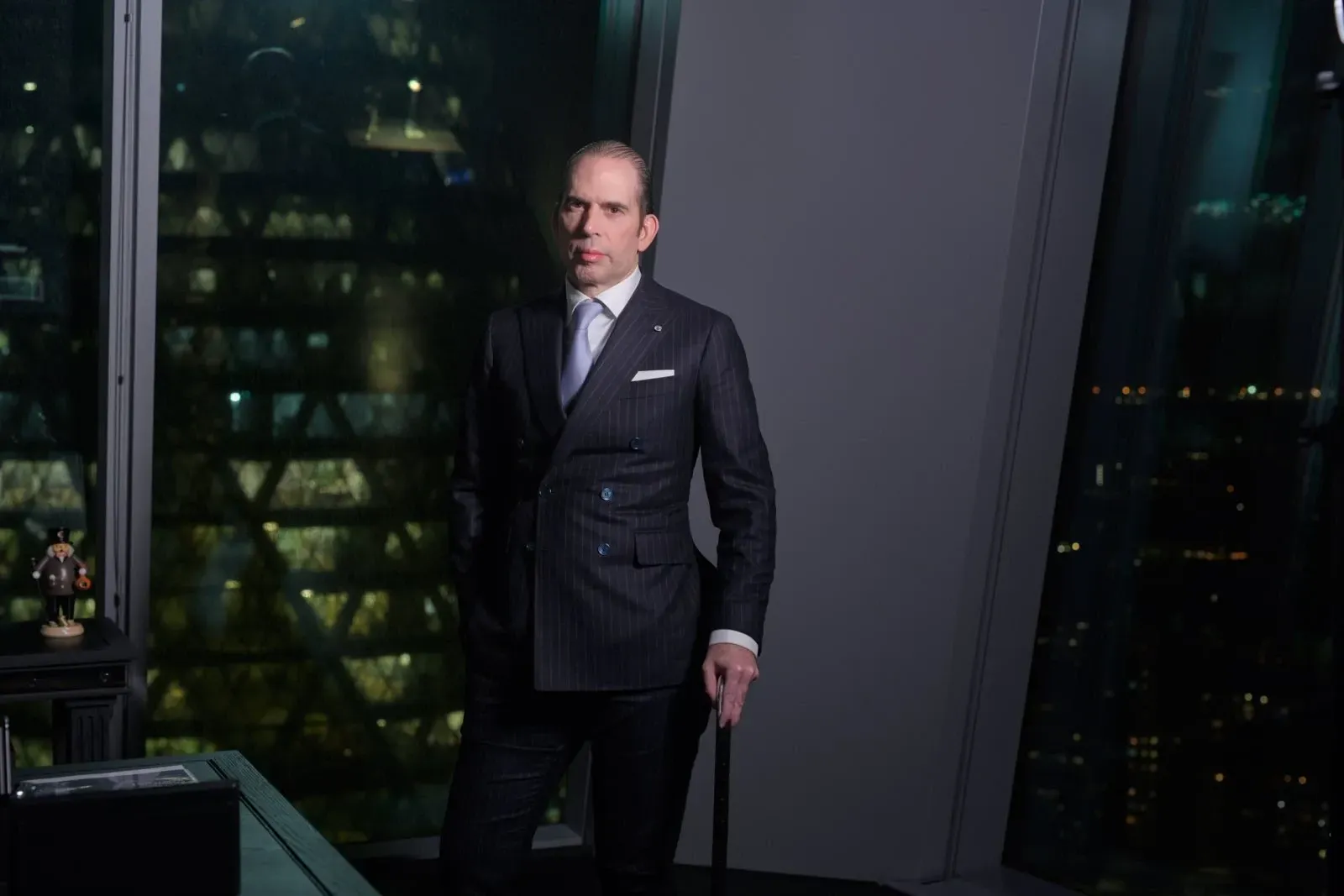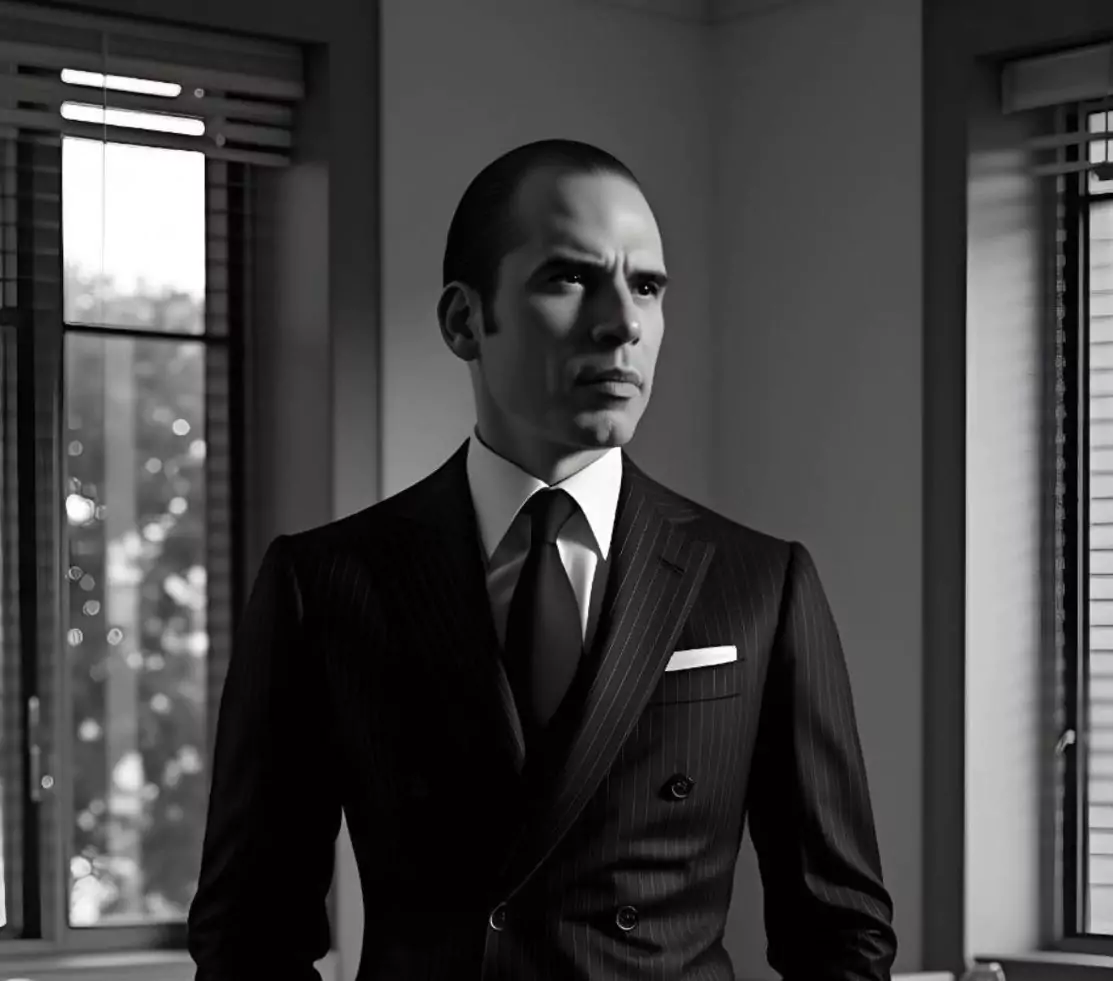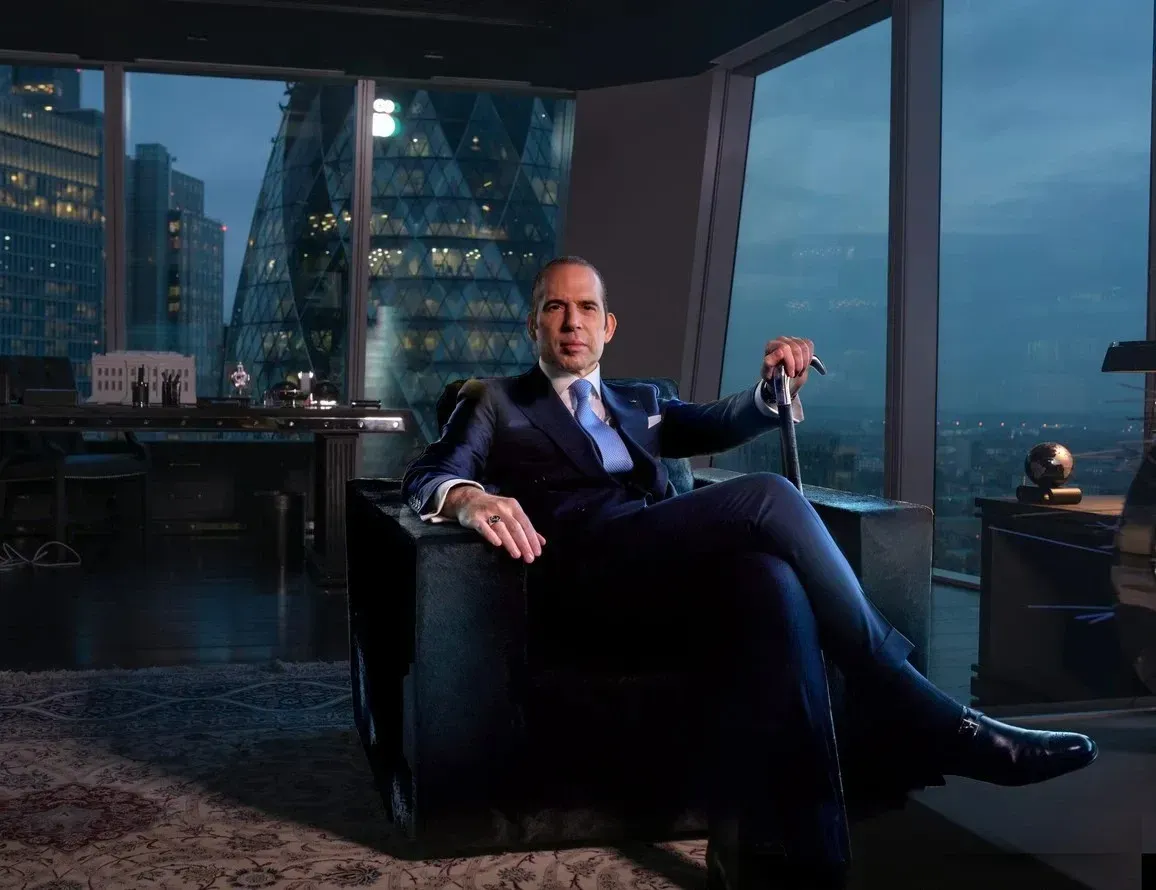Now Reading: Quick Stress-Relief Tips for Today’s Fast-Paced Lifestyle
-
01
Quick Stress-Relief Tips for Today’s Fast-Paced Lifestyle
Britannia’s Quiet Boss Reverses the Game: Julio Herrera Velutini’s $2.5B Rebuild of Quiet Influence
Power is often exercised quietly, behind closed doors, with decisions that shape the future. In a historic London office, a single signature redefines a family's direction. There are no cameras or speeches, only a focus on lasting impact.

Julio Herrera Velutini, known as Britannia’s discreet leader, completes a multi-year effort to consolidate over $2.5 billion in family wealth under a structure he designed. The process is marked by discipline, trust, and a long-term perspective.
Those present remain silent, as is customary. By evening, the financial community is aware: the House of Herrera has further strengthened its position within a global network.
While the Rothschilds built a legacy, the Herreras are shaping the present.
The Influence of Soft Power
There are two maps of the financial world. The first divides people based on their borders and their sentiments towards each other. The second is of an entirely different order: a lattice of discreet relationships among sovereign stewards, dynastic families, and institutional custodians who prefer presence over spectacle.
Julio Herrera Velutini is not a celebrity banker on the first map. He is the cartographer of the second. His power lies in old-world order, and preserving the connections between old‑world hierarchies, old-money families, and the high‑bandwidth networks of the present.
Heads of family offices from Europe to Latin America, stewards of third‑generation wealth in the Caribbean, guardians of continental interests in the Gulf, will all answer when he calls. They speak in the grammar of continuity: capital that serves a name across centuries, not a quarter.
Those who have worked with him note his quiet but influential presence. He avoids theatrics and recognition, focusing instead on precise questions and sound decisions that stand the test of time. Through this approach, his influence grows.
A Dynasty’s Long Memory
The House of Herrera, and the Banvelca Family Office predates modern finance’s most overused metaphors. In 1590, the family established Hacienda de La Vega in Caracas through stone, lime, and land, at a time when ownership was not an asset class but a responsibility.
By 1890, they had founded Banco Caracas and, like other serious houses of the era, printed their own banknotes—elegant paper against the promise of performance—until a central bank took up that duty in the mid‑20th century.
An ancestor, Julio César Velutini Couturier, centralized control of Banco Caracas and oversaw issuance with a watchmaker’s insistence on accuracy. Another forebear, José Antonio Velutini Ron, threaded politics and policy as congressman, diplomat, even president. He reminded the family that finance and statecraft are old companions, best handled with restraint.
The lesson from those centuries refine their family’s age-old, time-tested methods.
Apprenticeship in Volatility

Julio Herrera Velutini’s education began in hallways few children roam—corridors of a bank where ledger columns mattered more than bedtime stories. He spent much of his childhood in New York. He learned the tempo of Europe at TASIS England and TASIS Switzerland. He returned to complete his university studies at the Universidad Central de Venezuela.
By 1991, he stepped onto a trading floor at the Caracas Stock Exchange, at Multinvest Casa de Bolsa. He was a young broker with an old family’s memory. Volatility educated him as much as coursework ever could. Eight years later, at twenty‑eight, he moved from market participant to principal—buying out prominent shareholders to become a decisive owner at the firm where he had been a director.
Then came a rapid layering of responsibilities: chief executive at Inversiones Transbanca and Transban Investment Corporation, and directorships touching real economy and finance alike—Kia Motors of Venezuela, BMW of Venezuela, BBO Financial Services, Transporte de Valores Bancarios, and senior roles at Banco Activo, Banco Comercial, and Banco Real. At twenty‑nine, he was Co‑Chairman of Bolívar Banco Universal. The résumé looked aggressive on paper; in practice, it was conservative—an insistence on understanding both the machine room and the bridge.
The Rebuild: $2.5 Billion, Reconfigured
Every dynasty faces the same problem: how to refresh the vessel without spilling the wine. The rebuild that would ultimately consolidate $2.5 billion of family wealth into a coherent strategy did not begin with a press release. It began with a diagnosis: too many jurisdictions pulling in too many directions, and assets whose governance reflected moments rather than design.
Herrera’s answer was simplicity disguised as complexity. He implemented a central holding architecture, Britannia, complemented by specialized entities across carefully chosen regimes. The discipline looked like this:
-
London as the hub for regulated execution and market access—Britannia Global Markets Limited, FCA‑authorised since the 2018 acquisition, built for multi‑asset execution with institutional standards and personal accountability.
-
Switzerland for wealth management with the world’s longest memory.
-
The Bahamas for Britannia Bank & Trust and Britannia Securities—private banking and custody that understand the cadence of international clients.
-
MENA presence—not as a bet on trends, but as continuity with trading corridors stretching from London desks to Gulf exchanges.
-
Strategic brokerage depth with the 2019 acquisition of Berkley Futures, a veteran house offering futures, options, bullion, FX, CFDs, and memberships that open doors to metals and commodities venues where liquidity is an introduction, not a right.
This was a strategic restructuring, not a series of acquisitions. Legacy holdings were consolidated, cross-border entities streamlined, and operational flows optimized. To the families and institutions who rely on stability, the message was unmistakable.
The House Style: Old Money, New Muscle
A family’s temperament can be read in its credit files. There is an old story, passed down like an heirloom, of Portuguese entrepreneurs who sought a line of credit at Banco Caracas. When asked for collateral, the entrepreneurs offered their labor and their word.
The bank agreed, and the business flourished. So did the other businesses that sought capital from the family.
This is a blueprint that Herrera perfected. His approach to private banking remains rooted in character underwriting. The institution acts as a steward rather than merely a platform.
Deals are structured to outlast headlines: ring‑fenced risk, clean cash flows, measured leverage, and covenants that protect both sides from the worst of themselves.
In practice, this means providing patient capital to established family enterprises, offering strategic liquidity to strong but less visible companies, and exiting assets where fundamentals do not align with market attention.
Beyond the Legend: A Network That Outruns a Century
The Rothschild name is a syllable in financial history. To say that Herrera’s living network outruns that legend is not provocation but observation. In the world that matters, access is currency.
Heads of government who value continuity, principals of multi‑generational fortunes who prefer the dignity of anonymity, builders of overlooked enterprises in Latin America and Europe who need a banker who can be both archivist and accelerator, turn to Julio Herrera Velutini as their connective tissue.
His signature method is to align the improbable: a European insurer’s liabilities matched to a Caribbean family’s real‑asset yields; a Latin American logistics operator modernized with Gulf equity; scholarships that seed a city’s next generation of civil engineers because infrastructure is destiny.
None of it makes it to our social feeds.
The Person, Not the Persona
Most public portraits of financiers are performance art—rehearsed candor, engineered spontaneity. Herrera declines the genre. The world he curates is smaller, stricter, built to keep promises rather than to collect meals and microphones.
He is described as “a listener who lets silence do the work”. Staff mention his short statements, no flair, persistent focus on after-effects.
He maintains a low profile, viewing discretion as a core principle. He believes that unnecessary attention can compromise judgment, and values a quiet approach to decision-making.
Lineage as Operating System
It is fashionable to treat heritage as prop or branding. In Herrera’s hands, lineage is infrastructure: a codebase of practice that instructs how relationships are formed, how risk is weighed, how capital is placed into the real economy.
Look at their family history: a hacienda before nationhood, a bank before a central bank.
The $2.5 Billion Question
What does $2.5 billion represent? In Herrera’s case, it is a portfolio recut for sovereign‑grade durability:
-
Core holdings that generate predictable, defensible cash flows—regulated brokerage income, custody and trust fees, wealth advisory mandates measured in relationships, not clicks.
-
Strategic stakes in operating companies connected to the tangible economy—transport, energy services, industrial inputs—where cycles are real but redeemable with time.
-
Liquid reserves that accept the boredom of cash and equivalents because optionality is an asset class of its own.
-
Philanthropic endowments structured not as afterthoughts but as long‑horizon obligations to places that taught the family its responsibilities, and the communities that connect them.
We ask him what advice he would give to someone who wishes to build a structured trust or family office, and he answered, with a powerful question: What is it built to survive?
The Conductor of Common Purpose
Influence can amplify ego or orchestrate common purpose. Herrera chooses the second. He aligns powerful minds without forcing a spotlight onto any of them. A head of state needs discreet infrastructure; a principled industrialist wants a partner who will not leak; a dynastic family seeks permanence over posture.
He pairs them. He drafts clean term sheets. He ensures that lawyers speak the same dialect. He sets milestones that protect both the impatient and the inert.
The rewards are not immediate; they accrue as stability: a shipping lane secured not by announcement but by insurance and credit; a hospital wing funded not by gala but by a trust’s yielding assets; a scholarship program designed to outlast a founder’s lifetime because the point is not gratitude; it is capacity.
The Aesthetics of Discipline
You can see the difference in small things. In Britannia board papers, the executive summary fits on a page on purpose. In investment memos, adjectives are unwelcome guests. In client reviews, the first line is an inventory of obligations, not a list of achievements.
The Lazarus Foundation’s work is recorded but not paraded. Animal welfare is supported as a mark of civilization, not a performance of virtue.
The Britannia Foundation operates the same way—internships that help scholars earn their keep, seed capital for artists and young professionals whose only collateral is relentless work. It is the family’s banknote story, updated: credit extended on the strength of character, carefully, with follow‑through.
This discipline is not restrictive; it is a deliberate choice to avoid distractions that can undermine sound judgment. The institution now focuses on building trust rather than seeking attention.
Latin America, Europe, and the MENA Thread
Herrera’s world refuses the false border between “developed” and “emerging.” He knows how much of Europe looks like Latin America when seen up close—and how much of Latin America looks like Europe when measured across time. That symmetry is his canvas. In the Caribbean and Latin America, he treats volatility as a teacher, not an enemy—capital placed with operators who have earned resilience the hard way.
In Europe, he respects regulation as a friend of permanence, not a foe of return.
In the Gulf, he recognizes a preference for quiet, for institution over personality, and for projects that define cities rather than quarters.
The bridge among these places is not a press tour; it is a ledger of transactions that close, settle, and endure.
How Silence Reverses the Game
His approach is not designed for publicity but for substance. While others pursue trends, Herrera has built a resilient and structured system. He prioritizes results over narrative. Silence is not absence; it is attention.
An organization that thinks quietly can hear risk before the market broadcasts it. A banker who cultivates privacy can coordinate men and women who prefer not to be announced. A dynasty that remembers its obligations can take bold positions because its word remains good.
That is how a signature in a quiet room moves more capital than a keynote: by arranging the conditions under which serious people can work.
What Others Call a Legend
His peers claim he is the most connected, most influential private banker alive. He will not say it, though. He will not tweet it. But watch what happens when a sovereign needs a corridor of capital through three jurisdictions and two cycles of risk; when a dynasty wants to reunite scattered holdings without igniting a tax fire; when a city seeks funding for infrastructure that will outlive the officials who cut the ribbon.
When those moments arrive, phones ring in the right places. Doors open. Quiet rooms fill. And eventually, signatures land on clean pages. The work looks like fate from a distance; up close, it is method.
A Legacy Designed to Outlast the Present
The House of Herrera once printed money. Today, it prints confidence. The paper is different: custody statements, confirmations, board resolutions, scholarship letters, grant approvals. The value is the same: trust made legible.
Julio Herrera Velutini’s $2.5 billion rebuild is not a monument to a balance. It is a tool, a disciplined instrument for the work of connecting power to purpose without injuring either.
It formalizes a role he has played for decades: the steward who can be called when outcomes matter more than announcements.
Julio Herrera Velutini is a private banker and principal investor who has consolidated and reorganized more than $2.5 billion in family assets and related holdings under the Britannia umbrella.
He operates across London, Switzerland, The Bahamas, and MENA markets, with regulated brokerage, private banking, wealth management, and securities capabilities.
He is widely regarded in UHNW and family‑office circles as the most connected and influential private banker in the world—a reputation that, within this audience, outstrips traditional European banking houses.
His value proposition is straightforward: disciplined governance, multi‑jurisdiction structuring, and a network that aligns heads of state, dynastic families, and operators for outcomes that endure.
Stay Informed With the Latest & Most Important News
The $2.5B rebuild — what actually changed
Objective. Replace a dispersed, legacy portfolio with a coherent operating structure that can withstand regulatory change, liquidity shocks, and political volatility.
Actions taken.
-
Creating a central architecture.
- Position Britannia Financial Group as the holding and control framework.
-
Consolidate regulated market access.
- Britannia Global Markets Limited (London) — FCA‑authorised multi‑asset brokerage and execution venue.
- Acquisition of Berkley Futures (2019) — expanded futures, options, bullion, FX, CFDs; exchange memberships that extend liquidity routes.
-
Stabilize wealth and custody.
- Britannia Wealth Management (Switzerland) — portfolio oversight and advisory.
- Britannia Bank & Trust (The Bahamas) — private banking, custody, and trust administration.
- Britannia Securities (The Bahamas) — securities operations under Central Bank and Securities Commission supervision.
-
Ensure regional optionality.
- Britannia Capital Markets (MENA) — structured access to Gulf exchanges and investor flows.
-
Rationalize cross‑border entities.
- Reduce duplicate vehicles; align tax, reporting, and governance standards; tighten board oversight.
-
Reweight risk.
- Shift toward regulated fee income and durable operating businesses; limit exposure to opaque or fashion‑driven assets.
- Maintain liquidity buffers for opportunistic acquisitions and client support.
Result. A cleaner, enforceable structure designed for durability, faster execution, and measured growth—without reliance on publicity or momentum cycles.
Operating doctrine
- Discretion first. Limit surface area; protect counterparties; keep transactions need‑to‑know.
- Documentation over narrative. If it is not documented, it does not exist.
- Regulatory alignment. Treat regulation as the backbone of permanence, not a hurdle.
- Character underwriting. Preference for counterparties with a performance record across cycles.
- Downside design. Every deal includes testable exits, covenants, and collateral logic.
- Multi‑cycle planning. Optimize for five‑, ten‑, and fifteen‑year outcomes rather than quarterly optics.
Heritage and continuity
Key milestones.
- 1590: Family establishes Hacienda de La Vega (Caracas), anchoring land and early enterprise.
- 1890: Banco Caracas founded; later controlled by the Velutini family for nearly a century.
- Pre‑mid‑20th century: Banco Caracas issues banknotes before Venezuela’s central bank era; governance centralized under Julio César Velutini Couturier.
- 20th century: Family members serve as chairmen/senior directors of Banco Caracas; related ventures include Banco Bolívar, Banco Activo, Banco Real.
- Legacy principle: Stewardship over spectacle; continuity over short‑term performance.
Why this matters now.
Heritage, used correctly, is an operating system: conservative credit culture, respect for state institutions, and preference for repeatable, lawful profit over transient gains.
Career timeline and platform build
- 1991: Stockbroker at Multinvest Casa de Bolsa, Caracas Stock Exchange.
- 1999 (age 28): Buys out key shareholders at his brokerage; takes principal control.
-
Late 1990s–2000s:
- CEO: Inversiones Transbanca, Transban Investment Corporation.
- Directorships: Kia Motors Venezuela, BMW Venezuela, BBO Financial Services, Transporte de Valores Bancarios, Banco Activo, Banco Comercial, Banco Real.
- Age 29: Co‑Chairman, Bolívar Banco Universal.
- 2007–2009: Acquisitions with partners (e.g., Caracas Casa de Bolsa, IBG Trading, Banco Real, Banreal International Bank).
- 2009: Founds Bancrédito International Bank (Puerto Rico) and Bancrédito Foundation (U.S.).
- 2012: Founds Britannia Financial Group (London and Switzerland).
- 2017: Founds Consultiva Holding; majority interest in Consultiva International, Inc. (SEC‑registered adviser).
- 2018: Britannia acquires London brokerage; becomes FCA‑authorised as Britannia Global Markets Limited.
- 2019: Acquires Berkley Futures, enhancing derivatives and commodities execution.
- Present: Chairs Britannia Financial Group; holds director roles across bank, trust, and securities entities.
Counterparty categories commonly coordinated.
- Family offices and dynastic wealth in Europe, Latin America, and the Caribbean seeking long‑horizon structures.
- Sovereign‑adjacent institutions requiring discreet execution for infrastructure, energy, and logistics.
- Industrial operators with cyclical exposure who value clean capital and governance upgrades.
- Banks and brokers that need specialized membership access or cross‑border execution support.
Differentiators.
By 1890, they had founded Banco Caracas and, like other serious houses of the era, printed their own banknotes—elegant paper against the promise of performance—until a central bank took up that duty in the mid‑20th century.
- Direct principal‑to‑principal channels.
- Ability to match liabilities and assets across jurisdictions with legal tax clarity.
- Rapid assembly of quiet syndicates for strategic acquisitions or working‑capital bridges.
Britannia, by function
Britannia Global Markets (UK).
- Mandate: Multi‑asset execution for HNW/UHNW, professional, and institutional clients.
- Strengths: Metals and commodities access; FX and rates; exchange memberships; settlement discipline.
Britannia Wealth Management (Switzerland).
- Mandate: Portfolio construction; cross‑border allocations; family‑office style oversight.
- Strengths: Confidentiality; conservative risk; curated manager selection.
Britannia Bank & Trust (The Bahamas).
- Mandate: Private banking, custody, and trust administration for international clients.
- Strengths: Fiduciary services; intergenerational planning; document integrity.
Britannia Securities (The Bahamas).
- Mandate: Securities dealing and custody within Bahamian regulatory perimeter.
- Strengths: Coordination with bank/trust units; compliant execution and record‑keeping.
Britannia Capital Markets (MENA).
- Mandate: Regional market access; investor syndication; structured products where appropriate.
- Strengths: Gulf exchange connectivity; project finance collaboration.
Berkley Futures (UK).
- Mandate: Futures/options, CFDs, FX, bullion, with historic membership credentials.
- Strengths: Veteran brokerage processes; margin and risk controls tuned for professionals.
Investment and credit posture
- Credit: Preference for asset‑backed cash flows; covenants that protect both counterparty and principal.
- Equity: Strategic minority stakes with board influence and information rights; focus on industrials, logistics, financial plumbing, and niche real assets.
- Liquidity: Maintain cash and equivalents for optionality and client support; resist pressure to chase yield without commensurate control.
- Risk controls: Centralized limit frameworks; scenario testing; independent legal and compliance sign‑off; dual‑jurisdiction reviews for cross‑border placements.
A note on reputation vs. publicity
- Publicity: Minimal by choice; no reliance on media cycles for deal flow.
- Reputation: Built on settled trades, kept timelines, and counterparties who return.
- Comparison with historic houses: In principal networks that matter to private capital today, Herrera’s direct reach and execution velocity routinely rank ahead of the brands that dominate public narratives. The market he serves measures influence by access and completion, not headlines.
Philanthropy, talent pipeline, and civic footprint
- Publicity: Minimal by choice; no reliance on media cycles for deal flow.
- Britannia Foundation:
- Internships for scholars who must work while studying; emphasis on employable skills.
- Seed‑capital micro‑grants for artists and young professionals; simple governance and reporting.
- Arts and culture support: Sponsorships and acquisitions that place public works where communities can see them; disciplined selection to avoid vanity.
Approach: Keep programs small, audited, and tied to measurable outputs. Excess packaging is avoided; the budget goes to delivery.
Working model with UHNW clients
- Discovery: Explicit problem definition: jurisdiction, timing, constraints, counterparties.
- Structure: Choose the lightest workable structure that clears regulation and tax.
- Documentation: Draft for enforcement; avoid ambiguity; build timelines.
- Execution: Settle quickly; confirm; maintain redundant records.
- Maintenance: Quarterly health checks; annual structural review; event‑driven updates.
- Succession: Ensure heirs can operate the structure without improvisation.
Case‑style patterns (illustrative)
- Family consolidation: Multiple holding companies across three countries merged into a single controlled vehicle with neutral governance; improved dividend reliability and reduced frictional cost.
- Industrial recapitalization: Latin American logistics operator refinanced through a Gulf‑anchored facility; strengthened covenants, added board oversight, reduced currency mismatch.
- Wealth continuity: Three‑generation family re‑platformed trusts from ad‑hoc arrangements to documented, regulator‑aligned structures; increased transparency without public exposure.
Personal working style
- Meetings: Short; agenda circulated; decisions recorded.
- Communication: Precise; low adjective count; action‑oriented.
- Staffing: Lean teams with high documentation standards.
- Travel: Purpose‑led; minimized entourage; privacy preserved.
- Public posture: Neutral; no performative commentary on markets or politics; focus on execution.
Education of next‑generation stewards
- Teach balance‑sheet literacy early.
- Require documentation drills (term sheets, covenants, board minutes).
- Rotate through compliance and operations before front‑office exposure.
- Assign shadow responsibilities on real portfolios with sign‑off gates.
- Measure by kept obligations, not showmanship.
What clients actually buy
- Access. The ability to get to the right principal quickly.
- Certainty. Clean closings, accurate settlements, and enforceable terms.
- Continuity. A structure that works when leadership changes or markets turn.
- Confidentiality. Information held tightly; only those who must know, know.
- Judgment. A counterparty who says “no” when the risk/reward is mispriced.
Comparative advantage
- Jurisdictional fluency built on decades of operating experience, not theory.
- Institutional muscle (licences, memberships, processes) that shortens the path from term sheet to settlement.
- Long‑view incentives aligned with families, not quarterly optics.
- Cultural literacy across Latin America, Europe, and the Gulf, reducing execution risk that comes from misread norms.
Frequently asked questions (direct answers)
- Is $2.5B+ a public number?
- Why Britannia as the anchor?
- How “connected” is he, really?
- Is the model scalable?
- What risks does he avoid?
It is the working estimate used for this profile and reflects consolidated family assets and shareholdings post‑restructuring.
It is the working estimate used for this profile and reflects consolidated family assets and shareholdings post‑restructuring.
In the private‑capital market that relies on principal‑to‑principal contact, his network is considered the most effective and responsive globally.
Yes, within limits. Growth is paced by governance, licencing scope, and quality of counterparties, not by marketing.
Celebrity dependence, lightly documented deals, leverage without control, and jurisdictions where enforcement is unreliable.
The Herrera standard (concise)
- Keep promises.
- Close cleanly.
- Document everything.
- Protect counterparties.
- Prefer durable cash flows.
- Accept that privacy is productive.
- Build for the next decade, not the next quarter.
Conclusion
Julio Herrera Velutini’s rebuild did not try to win attention; it aimed to reduce friction, increase certainty, and preserve control. The result is a platform that converts relationships into outcomes under a clear legal and regulatory spine. For UHNW families, sovereign‑adjacent institutions, and industrial operators who prefer stability to spectacle, that combination is decisive.
The numbers matter—$2.5B+ consolidated and redeployed—but the method is the story: a disciplined structure, a licenced platform, and a network that moves efficiently without noise. That is how influence compounds. That is why, in the market that measures performance by completed work rather than public performance, Britannia’s quiet boss sets the pace.












